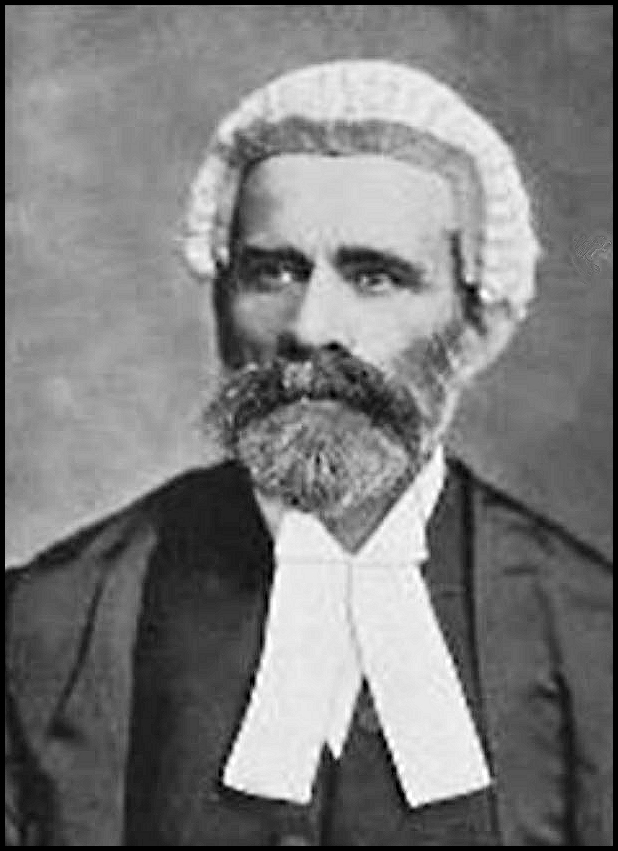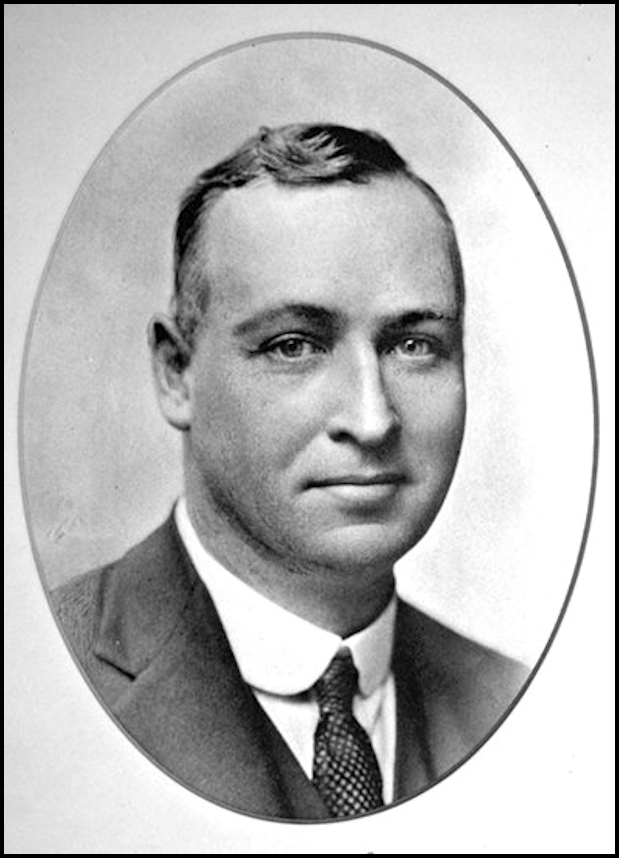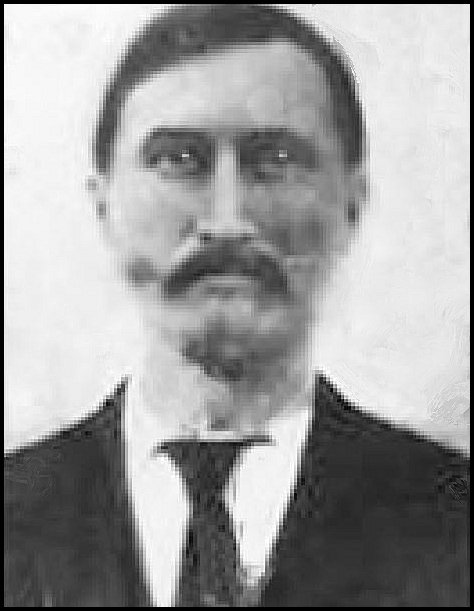A Rousay Family
in an old
Australian Visitors’ Book
by John Marwick
Published in the Newsletter of the
Orkney Family History Society,
Issue No 62, June 2012
Some of you may be familiar with the book Rousay Roots which contains the histories of most of the old families of the Parish of Rousay. It was researched and written by my uncle Robert C Marwick (member 34) and he later put all the details online at www.rousayroots.com together with a wealth of other information. I now maintain the website on behalf of Robert.
I receive several email queries through the Rousay Roots website, usually from people of Rousay descent who are seeking further details about their roots, or who have family information or old photos which they would like to be added to the website. However, last year I received a query from a Rolf Lunsmann in Sydney, Australia for an unusual and fascinating reason. Rolf, who has no Orkney connection himself, was researching people who had signed a Visitors’ Book in a house on the outskirts of Sydney. The Visitors’ Book covered the period 1894 to 1945, and during his research Rolf established that one visiting family had a Rousay background.
A brief history of the house, the Visitors’ Book and Rolf’s research –

Rolf’s mother-in-law, Mrs Diana Kenny, lives at Blackheath in the Blue Mountains district on Sydney’s outskirts in a house called Yangoora. Yangoora is a substantial Victorian period house that was originally built by Justice Archibald Simpson [pictured to the right] in 1894 as a summer retreat for his wife, Marion Goldie. Justice Simpson was then a judge of the NSW Supreme Court.
Diana and her late husband Terry Kenny purchased the house, fully furnished, from a descendant of the Simpson family in the mid 1960s. Among the contents was a writing book that had been used as a Visitors’ Book, recording visitors to the house from its opening in 1894 through to 1945. The book lists the names of the visitors and the dates of their visits. It also includes some references to historic events such as the death of Queen Victoria, the federation of Australia, Keith and Ross Smith flying over the house (the first pilots to fly from England to Australia, in 1919), bushfires etc.
In all, the book includes the names of over 300 individual visitors. Until recently Rolf knew little about the people represented, but he then took on the formidable task of identifying them all and trying to put together at least some biographical information on each of them. Doing so seemed to bring the book to life and it helped to enliven the history of the house. After more than 12 months’ work, primarily using internet based resources and a few trips to the State Library of NSW, he had identified about 200 people and had at least some information about the majority of those 200. Practically all the visitors to Yangoora were prominent members of Sydney society.
The Rousay background –
Some of the visitors to Yangoora included the wife and children of a Dr John Gibson, although not, apparently, Dr Gibson himself. Rolf established, with some help from Rousay Roots, that Dr John Gibson was born in Rousay in 1856 and his wife Isabella Gibson (ms Gibson) was also born in Rousay in 1856. (Their daughter Janet Winifred Gibson was born in Edinburgh in 1887 and son Alfred John Gibson was born in Edinburgh in 1888.) This family went to Australia in 1889. Dr John Gibson became a prominent member of Sydney society, as you will see from his obituary below.
It would appear from the Visitors’ Book that Isabella Gibson and Marion Simpson were close friends. Alfred John Gibson, his wife Ailsie Talbot and their eldest child Ailsie Jean Talbot Gibson, were also regular visitors to Yangoora.

Alfred John Gibson [pictured to the left] also became a doctor and he was a prominent obstetrician in Sydney, practising at the Crown St. Women’s Hospital and lecturing at the University of Sydney. He was the President of the NSW Branch of the British Medical Society in 1932-33.
Rolf’s main reason for emailing me was to ask if I had any information on the Dr Gibson family other than that already published in Rousay Roots. Unfortunately I didn’t, except to point him towards Dr Christopher Begg, a great-grandson of Dr John Gibson, who practises in Forster, NSW. Dr Begg was in Scotland several years ago and visited Robert C Marwick at his home in Kilwinning, Ayrshire to obtain a copy of Rousay Roots. He provided the details of Dr John Gibson’s descendants which are on the Rousay Roots website.
Tribute to Dr John Gibson from the British Medical Journal, 23 July 1910, kindly provided by Rolf Lunsmann –
(From our Special Correspondent)
Death of Dr John Gibson
Dr John Gibson who practised at Windsor, New South Wales for the past twenty two years died from chronic Bright’s disease and uraemia off the coast of New Guinea during a cruise for the benefit of his health on 5th May. He was in his 54th year. He was born in the Orkney Islands on 17 November 1857. He entered the University of Edinburgh, where he studied for two years in the Faculty of Arts. He then proceeded to the study of medicine, and after a distinguished career graduated MB, CM in 1879. He at once proceeded to Evie in the Orkney Islands where he engaged in private practice. He was there appointed medical officer to the parochial board of the parish of Rousay and Egilshay.
After six and a half years’ residence there he resigned his position and returned to the University of Edinburgh where he entered on special studies in pathology and bacteriology. There Professor Greenfield secured his assistance in carrying on some original researches on behalf of the Fishery Board of Scotland. For two years he held the position of second assistant in the pathological department under Professor Greenfield, and during that time he prosecuted some researches on waxy and hyaline degeneration, and for his thesis on this subject he received a gold medal on graduating MD in 1887.
He came to Sydney in 1888, and was appointed acting house-surgeon at the Prince Alfred Hospital, Sydney. This position he resigned after three months to take up private practice at Windsor, where he resided for the rest of his life. At Windsor he was appointed honorary medical officer to the Hawkesbury Benevolent Asylum and Hospital, and also Government medical officer for the Windsor district; both these appointments he held at the time of his death. For some years after he went to Windsor he did a good deal of pathological work, especially microscopic examinations of specimens of cancer and tuberculosis in cattle for the New South Wales Government. At the Intercolonial Medical Congress in Sydney in 1892 he read a paper on certain worm nests or worm knots occurring in the cellular tissue of the brisket of cattle. The worm nests contained parasitic worms and filaria ova; these filaria have subsequently been named Filaria Gibsoni. In 1897 he was appointed medical officer to the Hawkesbury Agricultural College, a position which he held up to the time of his death. He laboured hard on behalf of the Hawkesbury Benevolent Asylum and Hospital, but he did not live to see the completion of the new buildings, for the erection of which he helped very largely to secure the necessary funds. The committee and subscribers of the Benevolent Asylum and Hospital, in recognition of his distinguished services, elected him President in 1909.
_______________
John Marwick, the writer of this article, is a 1st cousin 3 times removed of Dr John Gibson.


Jean-Baptiste Lanor
The Hudson’s Bay Company employee from the
island of Hortenez…..or was he?
Article by John Marwick, published in Orkney Family History Society Newsletter, Issue no 82, June 2017.
As I mentioned in an article for this newsletter a few years ago (No 62 in June 2012), I maintain the website www.rousayroots.com which contains the histories of most of the old families of the Parish of Rousay. Some of the correspondence I have had through the website has been interesting and the following tale which has a Canadian flavour may be of interest to other readers.
I received a query from DeAnne Valentin who lives in Kamloops, a south-central city in British Columbia. She had been researching her husband’s family history and became particularly interested in one of her ancestors, a Jean-Baptiste Lanor.
Jean-Baptiste Lanor turned up in Kamloops some time before 1868 accompanied by his children, but no wife. Very little was known about him prior to then except that he was from northern British Columbia and had worked there for the Hudson’s Bay Company (HBC) for several years. He had married in the 1840s, but as the church didn’t exist in that part of British Columbia in those days, the marriage would have been what the Canadians termed a “Country Marriage”, probably to a First Nation Canadian (aboriginal/indigenous) or to a person of First Nation Descent. It was assumed that Jean-Baptiste’s wife had died and he had left for Kamloops after her death. Her name is not known.
At that time, Kamloops was a village or a fort and was originally called Fort Thompson after its location on the Thompson river, before there was a change of name to Fort Kamloops.
According to Canadian census records for the children, their father, Jean-Baptiste Lanar, was born in Scotland and their mother, no name given, was born in British Columbia.
It struck DeAnne that it was unusual for a Scotsman to be named Jean-Baptiste – until she discovered that it was fairly common in British Columbia for a man with the English name John to become Jean or Jean-Baptiste owing to the strong French influence in the area.
Deanne then searched a British Columbia archives site and found a baptism record for John-Baptist Lanor. He was baptised on 28 Dec 1868 and his birth was listed as 1813. His father was Peter Leonard and his mother was Jane Louttit. The record also indicated that John was a native of Hortenez Island, which, after a process of elimination, was assumed to be a phonetic version of Orkney.
She also found a marriage record for the same date (28 Dec 1868) for J Baptiste-Lanor and Marguerite Silortssa. The groom’s birthplace was shown as Hockney Island and the father was Peter Lanor.
The conclusion was that Jean-Baptiste Lanor (or whoever) had been born in Orkney, and after further research of Orkney records it was also concluded that Jean-Baptiste Lanor began life as John Leonard, born on 15 May 1811 in Rousay to parents Peter Leonard and Janet Louttit!
It might seem unusual that Jean-Baptiste was baptised and married on the same day. But research indicates that the church in British Columbia did not recognise the Country Marriages which were common among European men and First Nation women, and the church priests were travelling round the various villages and forts having a “blitz” on baptisms and marriages, so the marriages could be recognised by the church. Most of these proper marriages took place around 1868.

John Leonard’s first marriage was to Helen Gibson on 13 Feb 1831 in St Andrews (the Orkney parish of St Andrews). Their names were recorded as John Linnart and Helen Gibson. They had two children – John Leonard b. 12 Jan 1831 and Peter Leonard b. 7 Apr 1833, both births in Rousay. ( I have found only one further trace of John Leonard Jnr in Scottish records – in the 1841 census, living with his mother at an unrecorded address in Rousay. I have found nothing more for Peter Leonard.)
Helen (or Ellen) Leonard is described as a pauper in the 1841 and 1851 censuses and there is a mention in the 1851 census that her husband was a Hudson’s Bay labourer. There is a Helen Gibbon in the 1861 census who is probably her, but there are no verifying details. She died on 16 May 1868 in Rousay.
John Leonard snr
Since Helen Leonard is described as a pauper in the censuses, it seems highly unlikely that she received any money from her husband, who after all was supporting another family in Canada. John Leonard does not appear in any Scottish census and there is no indication that he ever made a return visit to Orkney or had any contact with his wife Helen.
Some of John Leonard’s children from his first Canadian marriage settled in Kamloops and he had several children with his third wife Marguerite, most of whom also settled in Kamloops. Leonard became a well known name in the area.
John Leonard drowned in the Thompson River in Kamloops on the 28th December, 1868. His widow Marguerite had children with another man in 1873, 1877 and 1880 and married this man in 1879.
John Leonard’s pattern of behaviour was somewhat unusual as he was married with children when he was recruited by the HBC. There were some other married recruits but the vast majority were young single men, generally aged between 18 and 25. Like John Leonard, several of the recruits remained in Canada but most of the men returned to Orkney at the end of their (standard 5 year) contracts. Some of those who returned to Orkney had also married First Nation women, only to up and leave them and their children when they left Canada.
The HBC has extensive archives (now a Canadian national treasure) which are housed in Winnipeg. It is almost impossible to research the archives from a distance as the HBC does not provide assistance and a visit to Winnipeg is recommended or the hire of a professional researcher – both of which are expensive. However, the archives are very gradually being made available online. The archives include a biographical profile of each employee and there is an online profile of John Leonard, although it is very vague. According to the HBC profile he entered service c1840 in Montreal, where the HBC headquarters were located at that time. But another British Columbia archive suggests that he was recruited in 1834 in Stromness (where most Orkney men were recruited). His working life was spent as a Middleman in northern British Columbia in the Thompson River district and in New Caledonia. He left the HBC’s service in 1862.
If you are interested in discovering more about John Leonard and his family just Google John Leonard, Settler in British Columbia to view the extensive site managed by DeAnne Valentin.
My thanks to John Marwick for submitting these articles for inclusion here –
and to Orkney Family History Society for the use of their images.